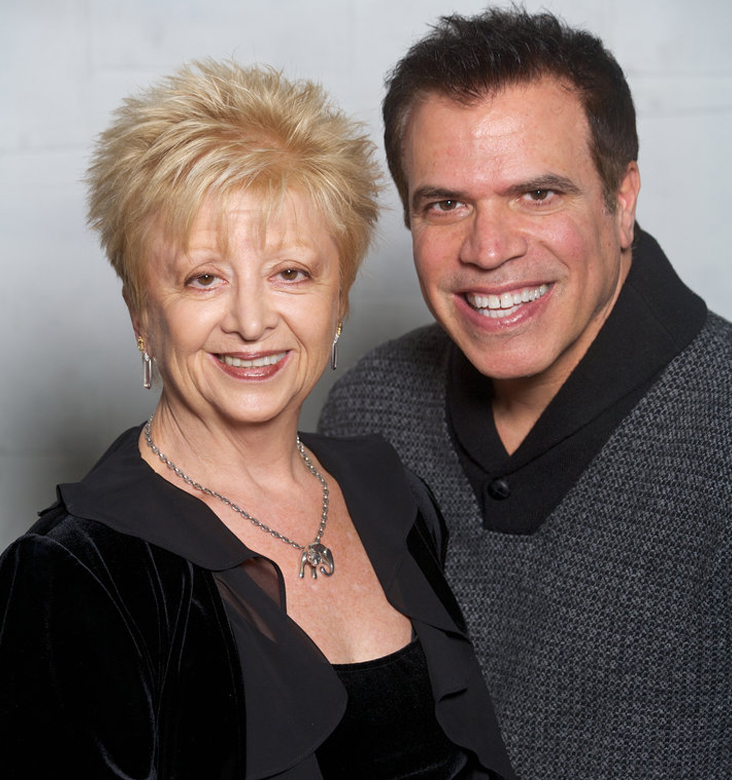Dance Teacher Q&A with Steve Sirico and Angela D’Valda Sirico
Looking to get the New Year Off to a Fast Start? Here are some questions that have come up over the past year. Maybe you need advice on one of these topics.
Q. How can I make my beginner classes more fun?
A. I am often asked this question and I would say that the most important part of teaching any beginner class is to go into it with a fresh and upbeat attitude. If you are used to teaching more advanced students, you will find that it is a change in mindset that is needed. This can sometimes be a little hard to do in the beginning but once you realize that the expectations must be different you have won half the battle. I like to give my beginner students a good idea of what technique is going to be needed for them to be able to execute combinations of steps. And I gradually add more and more technique. However, what I really like to give them is the feeling that they can move. How do I do that? Each week, I will show them a simple combination of steps that will let them experience movement. So often with beginner students, they become so caught up with their inhibitions and general lack of technique that they just become overwhelmed and unable to execute anything. I also give them visual handouts each week, perhaps showing the correct way to stand or the use of simple port de bras. These handouts always include pictures as it really will help a beginner student if they can visualize what you are trying to get them to do. Let your students experience the feeling of spinning and leaping and I have found that using different props are always beneficial. Scarves are great for spinning and hoops or balls to jump over work well too! Making these classes fun will have your students returning over and over and you never know when you might find a diamond in the rough!
Q. How can I improve my young boy dancer’s upper body strength?
A. Most young boys do not have great upper body strength, but from the age of 8 and up you can start working with them by introducing pushups in their regular classes. Start by just doing one set and then as they increase in strength and years you can add more repetitions. Just make sure that they are in a straight line with tight buttock muscles and legs and that their backs are supported by lifting the lower abdominal muscles to prevent the back from arching. Boys generally love doing this kind of exercise. You can also add some resistance band training for the biceps and triceps (these exercises can be found in the archives under floor barre.) For boys 8-10 I would advise using the lightest weight of band available.
Q. How can I get my dancers interested in Dance History?
A: This is an important question. I always tell my dancers that you must look at history to be able to move forward successfully. The bottom line is that if you want your students to learn dance history you are going to have to give them a reason to do it and propose fun ways for them to present their findings. I give my dancers different projects throughout the year. Perhaps one month it is for them to make a poster about a famous ballet or modern dancer. Another month, I might ask them to do a paper on a famous jazz dancer and Choreographer like Matt Mattox. I try to get them to do more than just print something off the internet because if they just do that they will end up not knowing anything about that artist. In Matt’s case, I would also tell them to research and bring in a movie that he was in (Seven Brides for Seven Brothers is a good example). I really feel that it is important for dancers to understand the different styles and excitement that these artists brought to the world of dance. Be creative with your ideas and your dancers will respond.
Q: How do you deal with a student who has behavioral problems?
A: Students who have this type of problem with a teacher are usually suffering from a feeling of insecurity that manifests as a discipline problem. They are usually desperate for attention and seek it in all the wrong ways. I have found that it usually helps to sit down with the student and explain to them that you like them as a person, but that their behavior is unacceptable and that you do not want to be reprimanding them constantly. I also try to give them a job that will help me in class. They might demonstrate for me or help me with the music, take attendance-something that shines a little positive spotlight on them, so they no longer feel the need to draw attention to themselves in a negative way.
Q: I am having a problem with a student who is constantly ‘sickling’ her feet. How can I help her?
A: Sickling is caused by a weakness in the ankle, so any exercises that you give her to help strengthen that joint will help. Rises on both feet holding onto the barre and on one foot are very helpful. Do them in sets of 10, keeping the weight evenly distributed on the toes with the heel centered; make sure to stretch the calf muscles in between. If she can build up to doing 100 rises on each foot, done in sets of 10 throughout the day, she will start to have strong ankles. Working with resistance bands is also a big help. If you look back at some of the core barre exercises for feet in the archives you will find some helpful ones. Also, make sure your student is aware of pushing her heel forward whenever pointing her foot.
Q: What is a safe way to help students understand how to hold their turnout?
A: I have always used the floor to help my students understand where the turnout comes from and how to move the legs without altering the position of the hips. Working on the floor enables them to safely feel where their body should be placed:
* Have your students sit on the floor with their legs straight ahead. Rotate the legs outward and inward, with the dancers placing their hands on the groin area so that they can feel the legs moving independently.
* Lie on the floor, legs straight. Push the center of the back into the floor and feel both hip bones connected to the floor. Turn out both legs, flex the feet, turn the legs inward and outward.
* Take one leg to pass; making sure that both hips are on the floor. Let the knee in pass; relax as far back as possible without arching the back. Return to original position.
All of these movements help the dancer understand how to hold their turnout and feel the correct muscles that are needed to strengthen turnout. Relaxation in the hip flexors is essential.
Q: How can I help my students have a better sense of balance?
A: There are several things that can contribute to a student not having a good sense of balance. The position of the feet and the weight distribution are extremely important. Toes need to be stretched out on the floor and in a comfortable position. When the student is on a rise or a releve, not only should the toes be spread out, but the weight should be between the big and little toe joint and the heel. The knees should be directly over the center of the foot and the hips should be in a straight line over the foot. The ribcage needs to be lifted away from the hips and the lower abdominals should be lifted to support the upper body. If the hips are allowed to release backward and the buttock muscles not utilized, the dancer will have problems balancing. The position of the head is vitally important to good balance: the chin should be lifted and the head should be in alignment with the rest of the spine. Shoulders must be relaxed and the chest line open. Working on a good stance will help any dancer to balance more successfully.
Q: My students have difficulty spotting on their pirouettes. Do you have any ideas on how to help them improve this action?
A: I find that the simple exercise is a fun way to help students understand how to spot: Face the mirror, feet slightly apart, and take tiny little steps to make a circle while leaving the head behind and then whip it around without losing sight of the face in the mirror. However, if the neck and shoulder muscles are not relaxed, it is very difficult to get this whipping motion. Also, understanding that there are 3 movements when you spot for a single pirouette: 1) Look in the mirror and turn to the side, leaving the head over the shoulder. 2) Turn the body to the other side and whip the head to the other shoulder. 3) Turn the body to face front and bring the head back to the starting position. Once the student understands this concept spotting is easier. For a double pirouette, there need to be 5 movements and so on. Most students have spotting problems because they use their head to spot with the same timing as the body’s rotation. Timing and rhythm are extremely important to achieve a good spot and the head needs to move more quickly than the body.
Q: I have one parent who always gives me a hard time after her daughter’s class. She tells me the child is bored and needs to be challenged more. I feel that she is working at the right level. Any suggestions please?
A: I would sit down with the parent and ask her what her goals are for her child and ask the child what her own goals are. This will help you understand exactly what their issues are. Very often the child becomes bored because they are constantly hearing from their parent that they are not in the correct level and so they start to believe that they are better than they are-and so their learning skills come to a standstill. When a parent is insistent about this issue and just keeps pushing, I usually set up a time when the appropriate teacher is available to give the student a small test on the technique that the parent thinks the student knows with the parent observing. Almost always it is clear to the parent that the child does not know enough to go up to a higher level. If the student does know everything he or she is tested on then, you should perhaps try them in the next level. I will also sit on this test so that I can explain to the parent how important the foundation is to a dance student and that without this strong base it will be very difficult and potentially a danger physically for them to go to a higher level without first mastering all the basics. Usually all of this is acceptable to the parent and the child. If none of this works, I think it is a good idea to sit down with the parent and find out why they came to your studio in the first place and why all of a sudden, they do not have faith in you as a professional. If you are not happy with the answer you may want to suggest that they find a different studio.
Here’s to Your Success!



